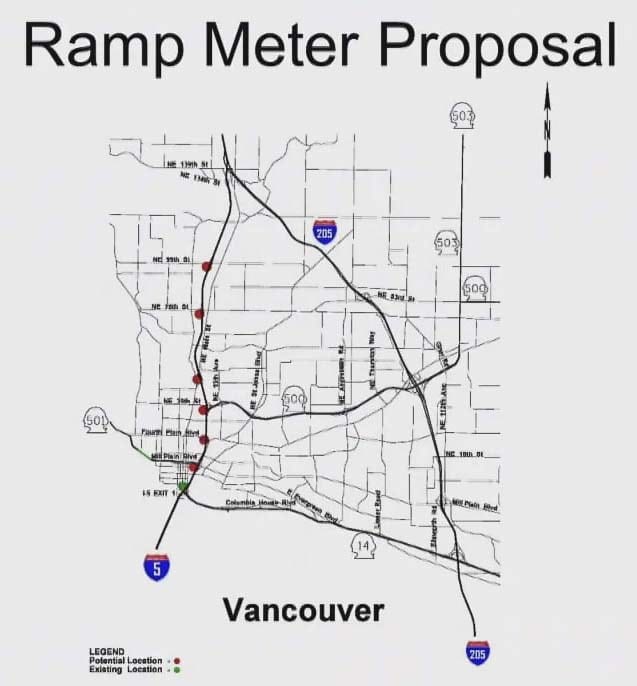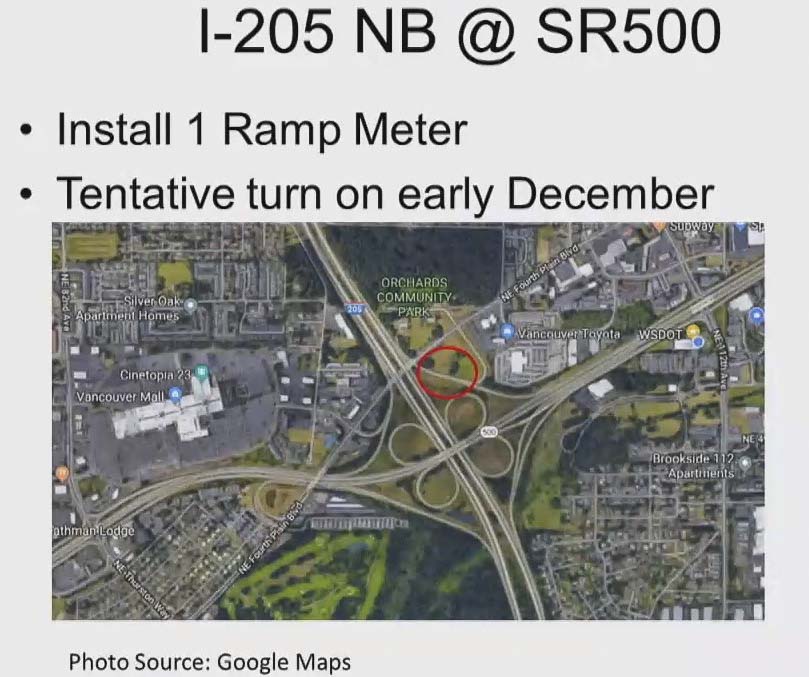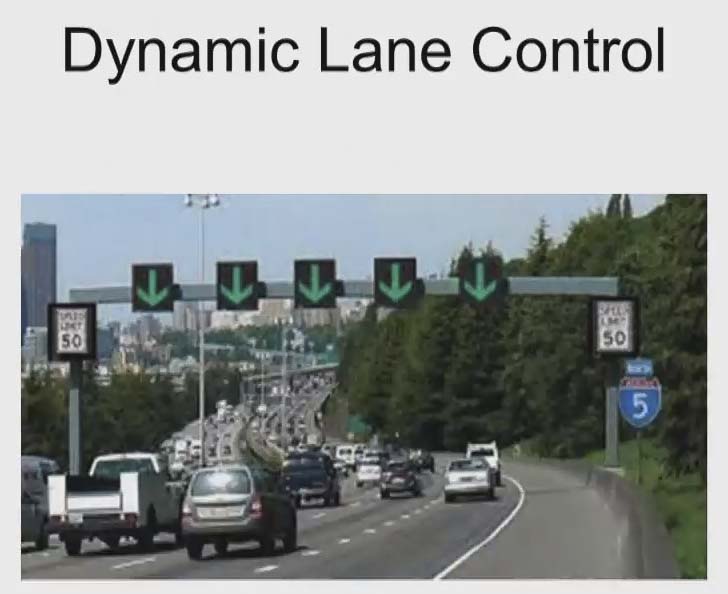One will come to SR-500 at I-205 this year, with more planned along I-5 southbound over the next 18 months
CLARK COUNTY — Anyone who commutes into Oregon for work on a daily basis is well aware that traffic has gotten worse. Much worse. It starts earlier, and it lasts longer.

According to Washington’s Department of Transportation (WSDOT), between 2011 and 2016 the average morning delay on I-5 southbound increased from around six and a half minutes, to over 24 minutes every morning. During that same time, delays on I-205 and SR-14 more than doubled.
Part of the problem, according to Scott Langer, assistant regional administrator for WSDOT’s Southwest Region, is the relationship between speed and capacity. As long as traffic on a freeway can move around 35 mph, things generally tend to flow freely. Dip under that speed, however, and it becomes more difficult for traffic to merge onto the freeway. At some point the system bogs down.

“Part of my theory is the reason why we have seen such a huge jump in this area is we have crossed that threshold,” Langer told the Southwest Washington Regional Transportation Council (RTC) at their September meeting. “So we’ve gone to the point where we’re actually losing capacity on the corridor because our speeds have gotten to that point.”
That’s where things like ramp meters come in, breaking up traffic merging onto the freeway enough to keep the flow from going under that 35 mph threshold for as long as possible.
“A lot of times during the heaviest peak hours we can’t completely stop that, but a lot of times we can delay it, or we can get the system to recover quicker,” Langer told members of the RTC during their September meeting. “Even if you take 15 minutes off either end of that peak congestion, that’s 30 minutes more of that freeway actually moving and goods getting through there.”

Langer was making a presentation about WSDOT’s long-term plan to help alleviate congestion in the I-5 corridor between 99th Street and the Interstate Bridge. Some of that includes a reconfiguration of the Mill Plain on and off ramps, and new signage to warn drivers of slowdowns ahead, or better alert people if there’s a lane closure coming up. But WSDOT is also planning to install meters on ramps along I-5 southbound between 99th Street and the bridge.
Part of the reason WSDOT has begun to focus on the I-5 corridor through Vancouver is a recent study that looked at traffic incidents in the area. Between 2009 and 2013 there were 442 crashes in that corridor, most of them rear-end or sideswipe accidents involving sudden slowdowns, or people trying to merge onto the freeway.
Currently, Vancouver has just one ramp meter, from downtown onto I-5 south at the SR-14 ramp. WSDOT plans to install a second one by the end of this year at the SR-500 ramp onto I-205 northbound.
“It’s not far from our building, and so from a public perception standpoint we’re putting it close to us,” says Langer, “you know we believe in this and our staff is going to have to sit at a ramp meter too to get the benefit. But it’s the right thing to do.”
Langer says their analysis shows that ramp meters present a solid return on investment when it comes to keeping freight and other traffic moving through a system.
“It’s estimated with this project we’ll have a 12-to-1,” he says. “So for every dollar we spend on it we’ll get twelve dollars back, and a lot of that comes out of the crash reduction.”
For proof of how effective ramp meters can be, Langer referred to a study done in the Minneapolis area after Jesse Ventura became governor in 1999. Ventura was not a fan of freeway meters, so the state’s Department of Transportation decided to do a test. They shut off all of the meters for six weeks, and hired a consulting firm to study the difference.

Langer says they saw crashes increase by 26 percent, reliability decreased 91 percent, travel times went up 22 percent, and total traffic throughput declined by 14 percent.
RTC member Jeanne Stewart, who is also on the county council, asked Langer about concern that ramp meters will back traffic up onto neighborhood streets.
“These are not the meters of the 1980s,” Langer responded. “They have detection on the ramps. For example Fourth Plain and as you go further up, the goal there of the ramp meter is really to break up the platoons that are coming onto the freeway from the signal. So you’re gonna have a pretty high rate.”
The other concern will be whether WSDOT can implement the ramp meters on all existing I-5 southbound ramps at the same time.
“Our funding is based on being able to basically retrofit what is there,” Langer says. “And so, if we couldn’t do that then there may be some that would slip out. But that’s the goal right now.”
It’s a goal because failing to have a ramp meter in one spot could drive more people to use that on-ramp, due to the perception that it’s a quicker way onto the freeway.
“Our goal is to get I-5 moving again at a rate that it’s more beneficial for them to stay on the highway than to try to use some of those local streets,” says Langer. “That’s also another reason we wanted to do this in a corridor approach and not one-off ramps, because that was exactly our concern that if we do Mill Plain, we’re going to move the problem to Fourth Plain and redistribute the traffic.”
The goal of WSDOT is to complete the I-5 Southbound corridor safety project before Summer of 2020, when ODOT is expected to close the Interstate Bridge northbound for up to two weeks in order to replace a cracked trunnion on the lift span. During that closure, traffic both directions will share the southbound Interstate Bridge lanes. The resulting backups could be among the worst the region has seen in decades.
One change you shouldn’t expect to see around here that WSDOT implemented in the Seattle area are variable speed limits. Langer says they have found those difficult to enforce, and that simple alerts about slow or stopped traffic ahead are much more effective at reducing rear-end collisions, and people tend to automatically slow down when they see those warnings.




